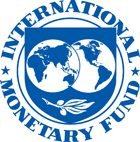GLOBAL FINANCIAL STABILITY REPORT

Typical street scene in Santa Ana, El Salvador. (Photo: iStock)
IMF Survey : Credit Default Swaps on Government Debt Are Effective Gauge
April 11, 2013
- Same as bonds in reflecting country’s creditworthiness
- Sovereign credit default swaps can help investors hedge risk
- Hindering use of sovereign credit default swaps could raise funding costs for governments
Credit default swaps on government debt are effective tools for investors to hedge risks, and can enhance financial stability, according to a new analysis from the International Monetary Fund.

Credit default swaps are increasingly used to hedge risks in advanced economy government debt (photo: Stan Honda/AFP/Getty Images)
Credit default swaps are financial instruments investors can use for hedging. In the case of government debt, investors use the swaps to express an opinion about the creditworthiness of a government, and to protect themselves in the event a country defaults or undertakes a debt restructuring.
The growing use of sovereign credit default swaps in advanced economy debt has raised questions about whether their speculative use could have destabilizing effects on the financial system, and how policymakers should respond. The European Union has recently banned the purchase of protection using these contracts if the buyer isn’t hedging, called naked selling of sovereign credit default swaps contracts.
In new research from the Global Financial Stability Report, the IMF said policymakers could improve the market for sovereign credit default swaps in other ways: by requiring more data disclosure, and by implementing the Group of Twenty regulatory reforms that aim to enhance the robustness and functioning of over-the-counter derivatives markets.
“Our study showed that sovereign credit default swaps are receiving a bad rap—they are no more or less effective at representing the credit risk of governments than are the government’s own bonds,” said Laura Kodres chief of the global stability analysis division in the IMF’s Monetary and Capital Markets Department and the head of the team that produced the analysis.
Not just for emerging economies anymore
Financial markets developed credit default swaps on government debt as flexible instruments to hedge and trade sovereign credit risks. Before to the global crisis, the market consisted largely of contracts on emerging market government debt because investors consider their credit risk as higher and more variable.
Although credit default swaps on government debt are only a fraction of countries’ outstanding debt market, their importance has been growing rapidly since 2008, especially in advanced economies where the creditworthiness of some of these countries have come under pressure. With the intensified attention, their usage has come under more scrutiny.
Debunking myths about credit default swaps
The IMF said credit default swap spreads provide indications of sovereign credit risk that reflect the same economic fundamentals and market conditions as the underlying government bonds. There is little indication that they raise sovereign funding costs—in other words, not much evidence that “the tail wags the dog.”
The IMF’s empirical analysis finds that both credit default swaps and government bond spreads exhibit similar and significant dependence on key economic fundamentals, such as government debt-to-GDP ratios and GDP growth prospects. Also, investor appetite for risk and market liquidity similarly influence both swap and bond spreads.
The analysis also shows that credit default swap markets incorporate new information faster than sovereign bond markets during periods of stress, despite wide differences across countries in normal times. Generally, the more liquid the credit default swaps market, the more rapidly it incorporates information relative to bond markets.
By contrast, whether credit default swap markets are more likely to propagate shocks than other markets is unclear. This is because risks embedded in credit default swaps cannot be readily isolated from risks generally found in the financial system, such as those associated with financial firms.
“We found little evidence to support many of the negative perceptions and alleged destabilizing roles of credit default swaps, although there is some evidence of that swap spreads overshoot their predicted level for some euro area countries during periods of stress,” said Kodres.
Don’t shoot the messenger
Initiatives by policymakers, such as the European Union ban on naked selling of credit default swaps, could eventually harm the hedging role of markets as market liquidity and depth deteriorate and result in higher spillovers to other markets.
This could add to financial instability and contagious transmission channels as hedgers migrate their hedges to the next best markets, potentially adding unintended stress and volatility to these markets. In the longer term, such actions could increase sovereign funding costs, to the contrary of the intentions of policymakers.
The IMF said policymakers can improve how the market for sovereign credit default swaps works by focusing their attention on implementing existing measures:
• Require counterparties to post initial margin on bilateral trades or move them to a central counterparty clearing house to lessen counterparty risks and reduce the potential for spillovers from sovereign credit events
• Mandate better data disclosure to mitigate uncertainty about exposures and interconnections of the market participants
• Implement temporary restrictions rather than imposing permanent ones only if necessary due to stress in financial markets, although previous research has found temporary trading bans to be of only limited use.
The IMF will release more research from the Global Financial Stability Report on April 17.







